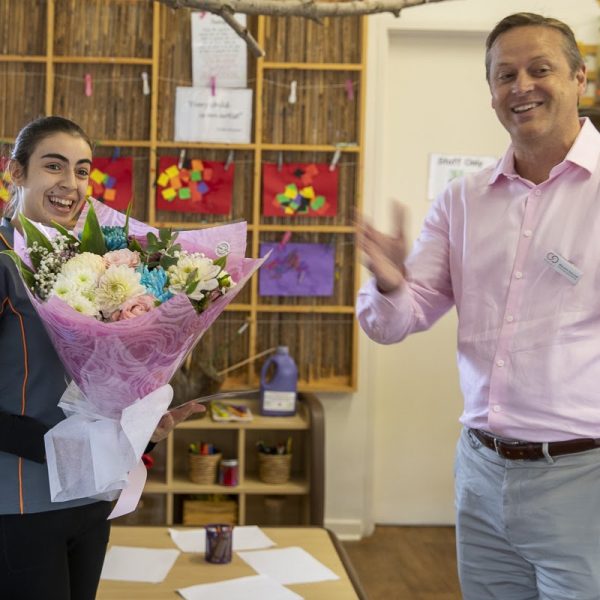G8 Education reports solid momentum in HY22 results after difficult start to the year

G8 Education Ltd has reported its first half results for 2022, in which it detailed a material bounce back in operational, and financial performance in the second half of the year as challenges associated with COVID-19 and flooding receded.
Revenues in the first half were $416.7 million, down from $421.5 million over the same period last year, with operating earnings before interest and tax (EBIT) of $21.0 million generated, down from $38.9 million last year.
A particularly challenging operating environment in the first three months of 2022 was created by a combination of the Omicron COVID-19 wave and flooding in parts of Queensland and New South Wales, and saw a 2.1 per cent fall in like for like occupancy in the period and a consequent $16 million shortfall in earnings.
The Group experienced better trading conditions in the second half of the period with underlying business momentum securing a $20 million EBIT contribution over the three months to June 2022, compared to just $1.0 million in the three months to March 2022.
“Financial performance for the half was a tale of two quarters, with the first quarter being significantly impacted by COVID-19 and floods before occupancy and earnings recovered strongly in the second quarter,” Chief Executive Officer and Managing Director Gary Carroll said.
“The occupancy gap of 2.1 per cent points in March has been turned around such that occupancy finished in July 0.7 per cent pts ahead of the prior corresponding period. This occupancy recovery translated well into earnings performance, with core centre EBIT being ahead of pcp in Q2.”
Occupancy momentum and enquiry backlog bode evident but constraints still exist
Overall occupancy in H1 was 67.1 per cent across G8’s 432 like for like centres, down 0.9 per cent per cent versus last year with the Group’s 186 regionally located centres outperforming the broader portfolio by a wide margin, with an average occupancy of 75.5 per cent, 1.8 per cent higher than 2021 and 4.6 per cent higher than 2019.
The Group’s metro and suburban centres, of which there are 239, continued to lag on a like for like basis, with average occupancy of 61.3 per cent, lower than both 2021 and 2019 levels.
New South Wales was the best performing state with 70.2 per cent occupancy, and the ACT the worst with its nine centres tracking at just 48.0 per cent.
The occupancy momentum cited by Mr Carroll in his remarks was evidenced by spot occupancy as at 21 August rising to 73.8 per cent, up 0.8 per cent per cent versus last year, and an increase in care and education inquiries from families, however both are being constrained at the margin by sector workforce shortages exacerbated by absenteeism and deferrals in commencement dates resulting in an increase in waitlists and impacted conversion during the period.
As centre improvement program matures, occupancy and quality results evident
G8’s Improvement Program, which targeted underperforming centres with an emphasis on refreshing learning environments, supporting centre managers and embedding new routines, has now seen 361 centre complete their respective improvement journeys.
EBIT margins across the cohort were 1.2 per cent higher than the overall core portfolio with occupancy tracking in line with expectations. Notably, seven out of the eight centres undergoing Assessment and Rating in the period received a Meeting or Exceeding the National Quality Standard.
These centres will now transition to a business-as-usual model via a handover of operational management and development from project operations coaches to area managers with a corresponding transition from a project plan for each centre to a centre support plan, which covers and prioritises operations, practice, people and quality and are owned by the regional leadership teams.
The transition across to BAU will mark a significant evolution in the life cycle of the Improvement Program and will also support the broader cost reduction objectives outlined in April 2022 in response to the challenging start to the year and ongoing inflationary pressures.
Greenfield deliveries in 2022 pared back while impaired exits ongoing
Localised challenges associated with COVID-19 has led G8 to pare back its planned roll out of new greenfield sites in 2022 to six (from ten) centres with the total portfolio now standing at 14 centres.
The commitment to transition “ramped” centres across to the core portfolio is ongoing with six transferred across to the main portfolio at the beginning of the year.
G8 continues to chip away at exiting its impaired portfolio centres noting that “a commercial approach, guided by return on capital will continue to be employed when assessing exit alternatives, taking into consideration the lease tail and the trading performance of the impaired centres.”
23 centres, around 44 per cent of the impaired centre portfolio, have now been exited with negotiations ongoing for the exit of the balance.
Overall G8’s financial position remains sound with cash on balance sheet of $42 million, gearing of 9 per cent and a net debt to EBITDA multiple of 1.0x.
Commenting on the outlook for the Group Mr Carroll noted, “Looking forward, the long-term demand fundamentals for the sector are positive, including enhanced subsidy arrangements that will improve affordability for families in 2023.”
Popular

Provider
Economics
Soul Pattinson lifts stake in G8 Education, increases voting power to 7.85 per cent
2025-12-16 07:00:05
by Fiona Alston

Quality
Policy
Practice
Provider
Economics
Research
Workforce
NQF Annual Report 2025: Quality gains continue, but sector faces compliance pressures and persistent equity gaps
2025-12-10 07:21:19
by Fiona Alston















